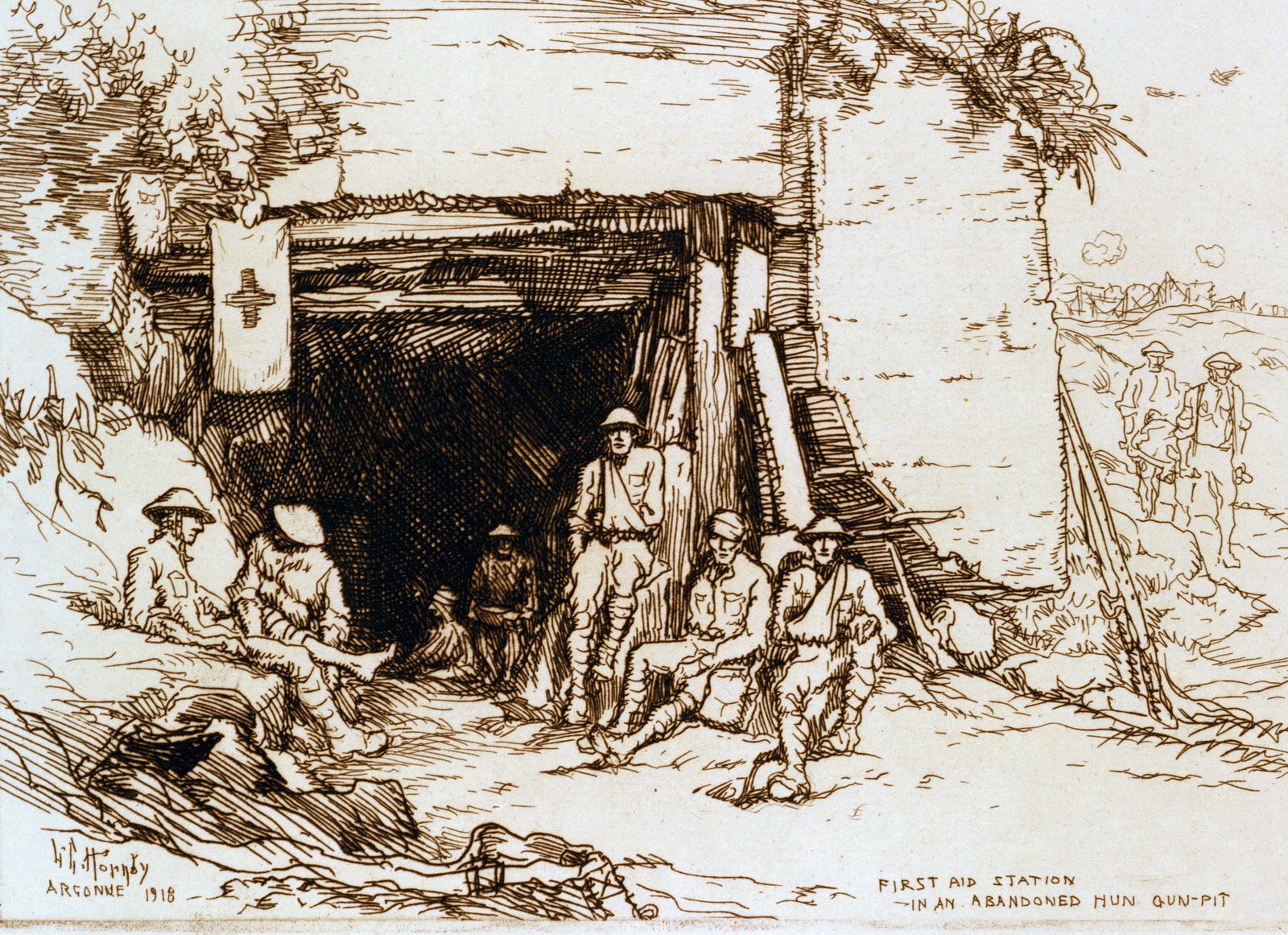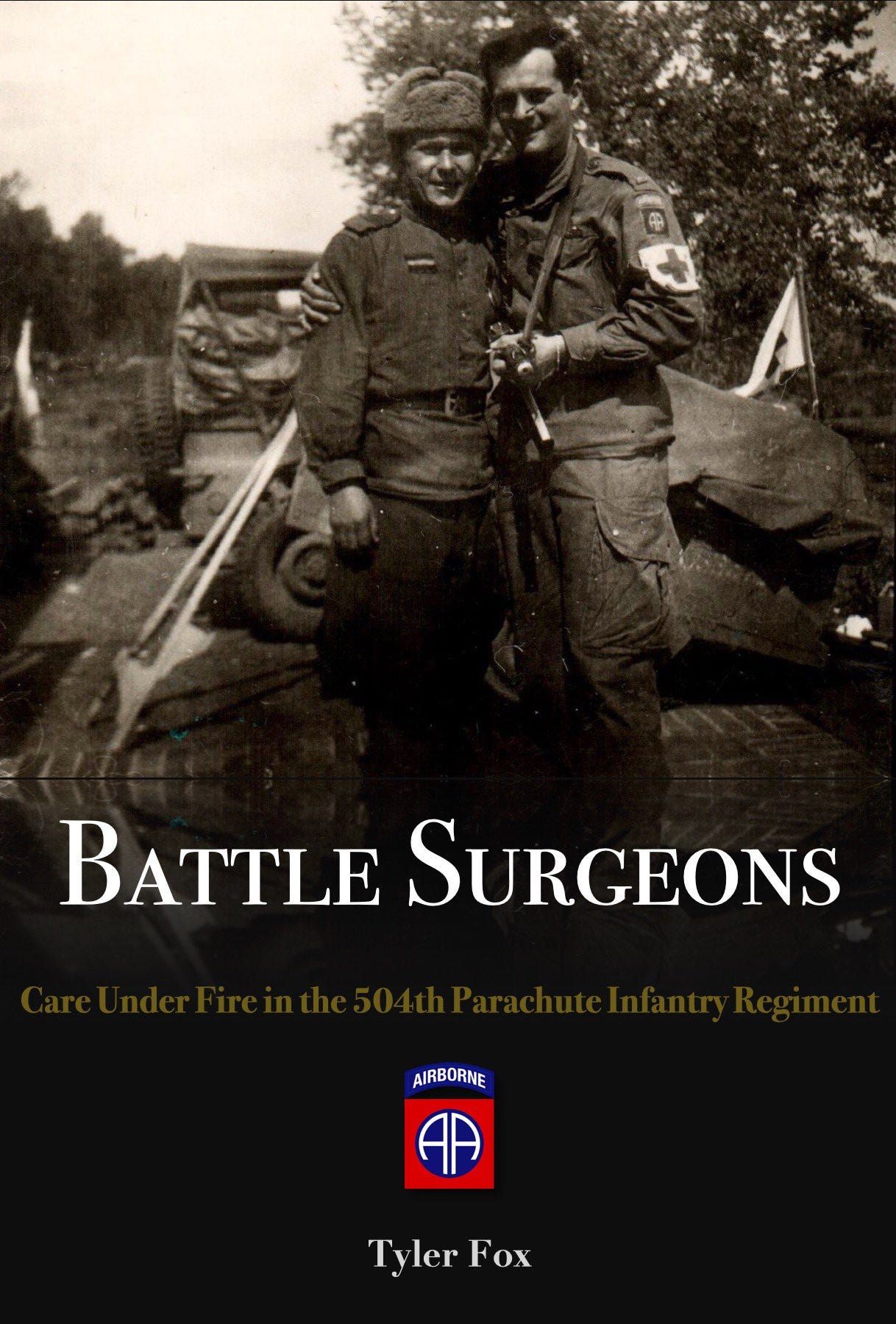Cold, Wet, Miserable Hours
BATTLE SURGEONS Preview
I hold a mighty unpopular view: the last 20 years of airborne literature has largely rehashed research of the 70s & 80s. While it has no doubt proved its righteous purpose, it has done little to advance the understanding of how airborne operations actually functioned. The reasons are manifold: historians out of touch with the current force, and popularization of airborne history post-Band of Brothers are among the chief culprits. The latter especially has left a vital part of this esoteric field sparse.
Looking for writings on airborne service troops? Good luck.
For medical personnel in particular, I know of only one book. The lone presentation I found lacked depth. But airborne supply troopers, parachuting medics, and all the rest were the reason historians can write the truly epic stories that unfolded after the parachutes blossomed. For history’s sake — and PME’s sake — it’s time to give these enablers their due.
Battle Surgeons follows 7 physicians and 1 dentist of the 504th Parachute Infantry. Through their eyes, it describes the who, why, and, most importantly, how of airborne casualty care & evacuation.
The following is set on Thanksgiving Day, 1943.
For Captain Halloran, it was one of the most memorable days of the war. Relief came under rain downpours which only Italy could produce, adding waterlogged clothing to the cold and weary muscles that had carried them over 45 miles that month. When they finally reached their destination, the men lined up under flashlights and were confronted with a large Thanksgiving dinner. It was their first real meal in remembrance. The men held out their helmets as they were filled with turkey, mashed potatoes, vegetables, cranberry sauce, and apple pie all commingled. “There was so much food they filled the helmets to the brim, and all around you could see a bunch of happy looking soldiers, bearded and muddy, eating everything with the one spoon they always have in their pockets for an emergency,” Halloran wrote home to his future wife. “It mattered little that they had used their helmets for everything from a wash basin to a shovel to dig a foxhole… It’s funny how certain scenes stick in one’s mind. I never cease getting a thrill out of something like that that makes a lot of men really happy. There is a look on a bunch of tired soldiers coming back from the front that can’t be described, but it makes you feel nice inside.”
It was also a proud moment for Colonel Joseph Sullivan, the supply officer for the Fifth Army. Plagued with ration problems, getting a Thanksgiving meal to the 504th meant that despite all the issues, they had been successful in getting a warm holiday meal to virtually every Fifth Army soldier. Getting that to the 504th, the most far-flung unit in the command, took herculean effort. A bakery company, assisted by an African-American service battalion, baked and cooked for 22 hours straight to prepare the meal for the 2,100 paratroopers before packaging all of it in large marmite cans and loading it on five 2 ½-ton trucks.
The men of the 2nd Battalion received their Thanksgiving meal in the village of Gallo, from which the regiment launched their mountain campaign in late October. Any time the unit was not engaged on the front, Captain Sheek made an effort to conduct basic physicals on the men. He examined half of the battalion on the 27th, and the following half on the 28th. He found the men’s teeth in poor condition, and sent for his old friend Captain Halloran. “It’s a beautiful ride up there to a little town situated on a high plateau, high up in the mountains,” Halloran wrote. “The road winds right up the side of a mountain with scads of hairpin turns and looks like a big piece of spaghetti when you get to the top and look down. These mountains are heavily wooded part of the way up and bald on top. They are at a gorgeous stage now… There is a myriad of color half way up the mountains and then snow on the top. It really makes quite a sight.”
Robert Halloran was a 25-year-old native of Bethal, Connecticut. He was an academically gifted young man. In high school, he graduated as the class Valedictorian; Fordham University was next, where he graduated with honors. A devout Catholic, Halloran briefly considered the priesthood before he settled on becoming a dentist. His academic prowess earned him a spot in Georgetown’s Dental School in Washington, D.C. In the midst of America's mobilization to war, he graduated Salutatorian of the class of 1942. Within days he enlisted in the Army. After a brief stint working in an Army dental clinic in South Carolina with a “bunch of old timers,” Halloran volunteered for parachute duty. He was young, felt he was suited for it and felt it was a rigorous physical challenge. He found the people he met in the paratroops interesting and inspiring, and the rugged, vagabond lifestyle that the paratroops provided fascinating. He often wrote home of all the places he went, and the unique things he witnessed all over Europe and northern Africa. Life in a combat unit was hard, and, like everyone else, he could be prone to short periods of homesickness and depression. “I wouldn’t swap my experiences and the inspiration I’ve gotten out of so many exhibitions of bravery I’ve seen for a lucrative practice back home right now,” he once wrote to his family. “But I just can’t help wondering at times just how long it’s going to be my destiny to live away from the place I call home.”
While the unit was engaged in combat duty on the front line, Halloran was often left with little dental work to conduct. All of Halloran’s dental instruments were kept in a large chest which remained in the rear echelon during periods of frequent movement, such as in the mountain campaign. But in those periods of rest where Halloran had his chest, he was often overloaded with work. In Gallo, it was especially exhausting for Halloran because his dental assistant, Sergeant Joseph Kisco, was sick in the hospital which doubled the chores for Halloran. He worked on the men of the 2nd Battalion from dawn to dusk for two days. He pulled 11 teeth and put in about 20 fillings. When Halloran did get to do dental work, he always wrote in letters home how much he loved and enjoyed dentistry. In combat, he could go several weeks at a time without performing much dentistry, and lamented that he did not get to keep up his skills at fillings and other things, and that sometimes men lost teeth they should not otherwise have due to the conditions.
What Halloran and Sheek saw in the men’s mouth at Gallo was where the rubber met the road. For months, two doctors from the Army’s Office of the Surgeon General had been conducting research on how diet was affecting the health of the Fifth Army as it slogged up and down the mountain peaks of central Italy. Their research, which was released just days after Halloran concluded his dental clinic in Gallo, estimated that the infantryman fighting in the Italian mountains needed some 4,000 to 4,500 calories a day to stay healthy. Needless to say, the 504th's diet of C- and the occasional K-ration, and foraged potatoes fried in olive oil, was wholly inadequate. It was estimated that it was leaving the men in a 700 to 1,200 calorie deficit per day. In other words, the men burned just shy of 17 pounds of themselves. It affected every aspect of their health, including the time it took for wounds to heal. In turn, this affected the turn-around time for getting men back to their units and the amount of hospital bed space was available. Their research summarized that the calorie and vitamin deficiencies found in their diet manifested in “sores on hands, mouths, tongues and lips; nausea and diarrhea; and bleeding gums and tooth decay.” Needless to say, ravenous hunger was another symptom. The study made the Fifth Army look at overhauling the way it issued rations, but there were no easy solutions and it was an issue that would shadow the 504th PIR for the entire Italian campaign.
Halloran would constantly have to combat Vincent's disease, also dubbed, “trench mouth,” which was an infection of the tooth margins and gums. It was caused by poor oral care, combined with vitamin deficiencies and emotional stress. The dental instruments Halloran was issued to do his work were relatively obsolete; he had to get dentists back home to send him the proper tools to conduct even basic dentistry……..




Tyler, although the scope of just the battle surgeons was beyond the scope of our books, Michel DeTrez and I, Peter Hendrikx, did pay attention to the medical support of the 82nd and 101st Airborne Divisions in our pictorial histories "D-Day Minus - 17 September 1944" and "Orange is the Color of the Day", both about the 101st, and "Bridges are Ours" and "Burning Bridges" both about the 82nd. Many rare new photographs and information never found in any other history, from new sources, was included to give them their share of recognition.
Very interesting reading on an aspect of combat most histories ignore. When I launched my brief career as a Civil War reenactor I became interested in the aspect of vision and eyesight among the soldiers of the period as I did without glasses or contacts until I found a source for historically accurate eyewear. Eyesight and vision are apparently one of the most sensitive elements of the human body and back in an era without an optician or optometrist in every block most people just coped with what was a part of life. Never pursued the thought to other bodily systems but I have come to appreciate the older B&W movies about WW2 for the reality in which most of the actors looked like people who had lived through the Great Depression.